My Son Sanctuary is a complex of Hindu temples and a Unesco world heritage site from 1999. It’s 40 km away from Hoi An and 70 km to the southwest of Da Nang. Thanks to being the religious centre of the whole Champa kingdom for 1,300 years, buildings in this place are commissioned by the kings. So, all of them looked majestic and glorious. However, its owners abandoned it in the early 14th century to hand over the land to Vietnamese people. 500 years later, the French discovered My Son’s temples by accident in the jungle and since then, well-kept secrets have been opened. Architects and archeologists from France said that Cham artists were masters of brick architecture. Visit and definitely you know why. Nowadays, My Son sanctuary is a perfect day trip from Hoi An and Da Nang. An experience there gives the chance to learn much about a fallen kingdom and its culture.
See also:
- Hoi An Old Town World Heritage
- Hue Imperial City World Heritage
- The Marble Mountains – A Complete Guide
- Da Nang Museum of Cham Sculpture
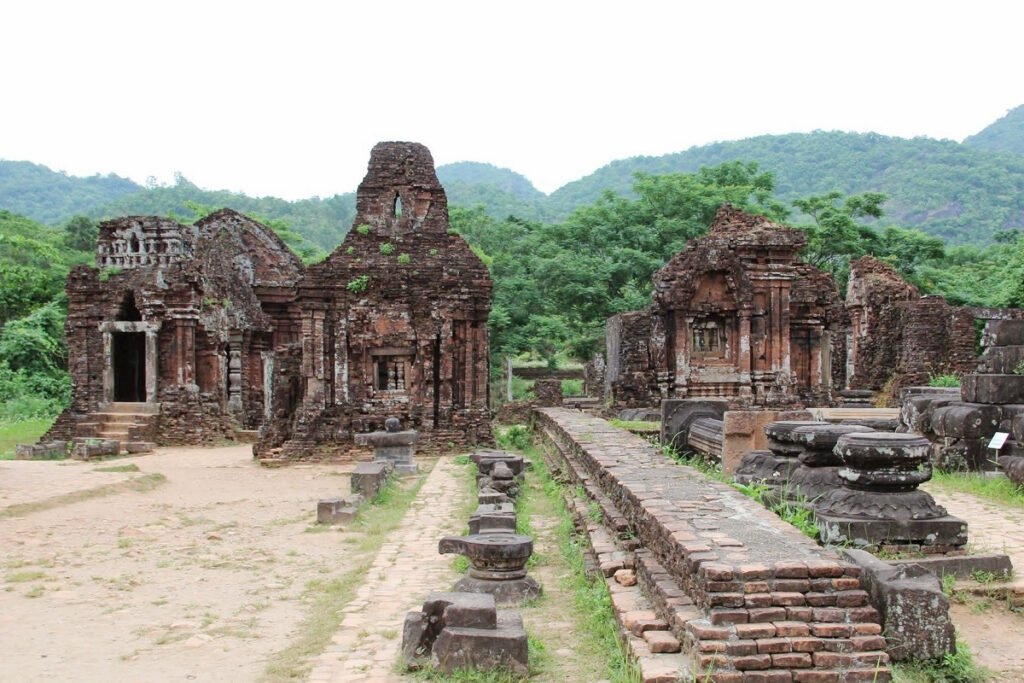
Table of content
- 0.1 A Quick Introduction
- 0.2 Name of My Son Sanctuary and its Temples
- 0.3 My Son Sanctuary’s Nature Reserve
- 0.4 My Son Sanctuary Facts
- 0.5 My Son Sanctuary Ticket Price
- 0.6 Buggy Transfers
- 0.7 My Son Sanctuary Guides
- 0.8 Photographer
- 0.9 Drinks, Foods and Souvenirs
- 0.10 My Son Sanctuary Opening Hours
- 0.11 What Should I Wear?
- 0.12 The Best Time to Visit My Son Sanctuary
- 0.13 How Much Time Do I Need to Visit My Son Sanctuary?
- 0.14 Champa Kingdom (4th to 13rd centuries)
- 0.15 Rediscovery of My Son Temples
- 0.16 My Son Sanctuary in Vietnam War
- 0.17 In the Post War
- 0.18 My Son’s Temples
- 0.19 Cham Traditional Performances
- 0.20 My Son Museum and Exhibitions
- 0.21 The Tower of My Son Sanctuary (Extra)
- 0.22 My Son Temple Vietnam Shivling (Extra)
- 0.23 Where is My Son Sanctuary?
- 0.24 Da Nang to My Son Sanctuary
- 0.25 Hoi An to My Son Sanctuary
- 0.26 Parking Lots and Fee
- 0.27 My Son Sanctuary’s Restaurants
- 0.28 Mi Quang Tieng Quy
- 0.29 Dac San My Ga My Son
- 0.30 My Son Tour from Hoi An
- 0.31 My Son Tour from Da Nang
- 0.32 My Son Heritage Resort and Spa
- 1 My Son Sanctuary on Google Maps
- 2 Related Posts
- 3 Non Nuoc Beach: The Famous Beach of Da Nang
- 4 How to Get from Da Nang to My Son Sanctuary
- 5 Thieu Tri Tomb: The Peaceful Royal Tomb of Hue
- 6 Bach Ma National Park: Hiking, Trekking in Da Nang and Hoi An
- 7 Hoi An Wet Season: What to Do in Hoi An When It Rains?
- 8 Hue to Da Nang By Train: The Best Train Ride in Vietnam
- 9 Hue Royal Tombs: A Complete Guide and What is Best?
- 10 The Hue Abandoned Water Park (Thuy Tien Lake Waterpark)
- 11 Minh Mang Tomb Complete Visitor Guide
- 12 Tu Duc Tomb Complete Visitor Guide
- 13 Thanh Ha Terracotta Park
- 14 Vinwonders Nam Hoi An Theme Park (formerly Vinpearl Nam Hoi An)
- 15 Am Phu Cave Complete Travel Guide
- 16 Hoi An or Hue: Which is Better?
- 17 Asia Park and Sun Wheel in Da Nang (Sun World Da Nang Wonders)
- 18 The Official Hoi An Travel Guide (MUST READ)
- 19 The Hoi An Market (Hoi An Central Market) Complete Guide
- 20 Hoi An Memories Show: The Best of Hoi An Impression Theme Park
- 21 How to Get to Golden Bridge from Da Nang
- 22 Hoi An Bridge: Famous Bridges in Hoi An
- 23 Da Nang Food Specialties: What to Eat in Da Nang
- 24 How to Get From Hoi An to My Son Sanctuary
- 25 Hoi An’s Chinese Assembly Halls and Chinese Temples
- 26 Hoi An Walking Tours: Heritage, Foods, Photography & Locals
- 27 Hoi An Self Guided Walking Tour (Hoi An By Yourself)
- 28 How to Visit Golden Bridge Vietnam
- 29 Da Nang Shore Excursions: Guided Tours From Tien Sa Port
- 30 Unique Experiences in Hoi An and Why?
- 31 Han Market (Cho Han): Where to Shop in Da Nang?
- 32 An Bang Beach: A Guide to Hoi An’s Best Beach
- 33 Experiences in Hoi An: Get Insight Into Hoi An’s Local Culture
- 34 Da Nang Cathedral (Da Nang Pink Church)
- 35 Things to Do in Ba Na Hills Besides Golden Bridge
- 36 Hoi An Nightlife: What to Do in Hoi An At Night?
- 37 Hoi An Countryside: Villages, Rice Fields & Tours
- 38 How to Get to Golden Bridge From Hoi An
- 39 Hoi An Entrance Fee: Old Town, Golden Bridge, My Son, More
- 40 Hoi An Airport: Everything You Need to Know
- 41 Hoi An Lantern Boat Ride on Hoai River
- 42 Da Nang Half Day Tours
- 43 Hoi An Private Car and Driver
- 44 Da Nang Private Car and Driver
- 45 What to Do in Hoi An Ancient Town
- 46 Da Nang and Hoi An Itinerary for Visitors Staying Overnight in Hoi An
- 47 Hoi An 3 Day Itinerary: A Travel Plan for 3 Days in Hoi An
- 48 Hoi An Free Things to Do: Budget Travel in Hoi An Vietnam
- 49 Hoi An One Day Itinerary: A Travel Plan for One Day in Hoi An
- 50 Da Nang Things to Do: Guide to What to Do in Da Nang Vietnam
- 51 Da Nang Best Things to Do and Reasons
- 52 Hoi An Half-Day Tours: Guide to Half Day Trips From Hoi An
- 53 Featured Tours and Experiences
- 53.0.1 Golden Bridge and Ba Na Hills Night Tour
- 53.0.2 Golden Hands Bridge Tour In Sunrise or Sunset (1/2 Day)
- 53.0.3 Cam Kim Island Bicycle Tour From Hoi An
- 53.0.4 Cham Island Tour From Hoi An (Group Tour)
- 53.0.5 Cham Island Tour From Da Nang (Group Tour)
- 53.0.6 Hoi An Vegetarian Food Tour
- 53.0.7 Hoi An Evening Walking Food Tour Through Laneways
- 53.0.8 Private Hoi An Basket Boat Tour (Shuttle Bus, Bicycle, Bike)
- 53.0.9 Half-day Am Phu Cave Tour (Private)
- 53.0.10 Hoi An Countryside Tour (Bicycle, Car, Electric Shuttle)
- 53.0.11 Da Nang Tour Package From Singapore
- 53.0.12 Hoi An Evening Tour From Da Nang
- 53.0.13 Hoi An Walking Food Tour Through Laneways
- 53.0.14 My Son Sanctuary and Hoi An Old Town Tour with Thu Bon River Cruise
- 53.0.15 My Son Day Trip From Hoi An including Marble Mountains and Basket Boat
- 53.0.16 Half Day Hoi An City Tour With River Cruise
- 53.0.17 Son Tra Peninsula Tour with Marble Mountains (Private/Small Group)
- 53.0.18 Hue Day Trip From Hoi An with Hai Van Pass, River Cruise & Lunch
- 53.0.19 Hoi An Ancient Town and Countryside Tour (Bests of Hoi An Tour)
- 53.0.20 Hoi An Tour From Da Nang Airport (Private, Optional Lunch)
- 53.0.21 Hoi An Day Trip From Da Nang (Marble Mountains, Basket Boat, Old Town)
- 53.0.22 Da Nang City Tour From Airport (Private, Optional Lunch)
- 53.0.23 Hoi An City Tour with Lantern Class, Lantern Boat, Night Market & Local Food Sampling
- 53.0.24 Marble Mountains, Basket Boat Ride & Hoi An Old Town Walking Tour
- 53.0.25 Marble Mountains & Golden Bridge Day Tour with Buffet Lunch
- 53.0.26 Marble Mountains & Monkey Mountain Tour (Half-day, Private)
- 53.0.27 Private Golden Bridge Sunrise Tour (Half-day, Optional Lunch)
- 53.0.28 Hoi An Ancient Town & Golden Bridge Day Tour (Private/Small Group)
- 53.0.29 My Son Sanctuary & Golden Bridge Day Tour (Private/Small Group)
- 53.0.30 Private My Son Sanctuary Sunrise or Sunset Tour
- 53.0.31 Full Day Hoi An Ancient Town & Countryside Experience With Local
- 53.0.32 Full Day My Son Sanctuary & Hoi An Countryside Tour With Local
- 53.0.33 Full Day Hoi An Ancient Town & Coconut Village Experience
- 53.0.34 Son Tra Peninsula, Marble Mountains and Hoi An City Tour
- 53.0.35 Half-day Marble Mountains Tour from Da Nang or Hoi An
- 53.0.36 Da Nang Cave Tour (Half Day Underground Tour in Da Nang)
- 53.0.37 Hoi An Old Town & Lantern Making Class (Morning Tour, Half-day)
- 53.0.38 Full Day Bests of Da Nang & Hoi An Old Town Walking Tour
- 53.0.39 Full Day My Son Tour From Da Nang with Da Nang City Tour
- 53.0.40 My Son Sanctuary Tour From Hoi An or Da Nang With Local Guide
A Quick Introduction
Within a forest valley surrounded by mountains, My Son sanctuary played its role as a Hindu holy land of Champa kingdom, from 4th to 13rd centuries. It comprises around 70 towers but because of many reasons, only 20 standing today. Dedicated to worship of the Shiva, God of destroying and recreation, the name of this complex was made from the name of the god and reigning emperors. Instead of crowds of pilgrims and prayers, only a limited number of people were allowed to be here. Since it was abandoned, its link with religion and kings was cut. Thanks to retaining the best examples of Champa architecture, Unesco recognized My Son sanctuary as a world heritage in 1999. Now, it’s among the most stunning historical attractions to visit in Central Vietnam.
Name of My Son Sanctuary and its Temples
Nobody knows which words Champa kingdom’s inhabitants used to call My Son sanctuary, even their descendants today. After 14th century, Viet people from the north handed over the land, but they had no idea about the existence of the temples. When it’s rediscovered in 19th century, French tagged this archaeological site as My Son, name of a village nearby. My Son means “the beautiful mountain” (not my son!) and maybe, locals hint at the Cat Tooth mount which visitors can see from the sanctuary.
On the other hand, the French also classified and named every group of temples and its individuals. To remember easier, letters in the Latin alphabet were used, from A to M. Name of each temple starts with the letter of its group, and a number behind. For example, Group A includes A1, A2 and more. Easy for scientists but not for commoners, the name of the groups is nicknamed, basing on their features. Sometimes people can’t explain why they call that. Market, Pagoda, Chessboard, Starfruit Crater are nicknames for major clusters.
My Son Sanctuary’s Nature Reserve
My Son’s temples are surrounded by forests that extend up to the peak of Cat Tooth Mountain, nearly 1,000 hectares in the latest documents. In 2020, the Vietnamese government made a decision to establish My Son nature reserve to preserve a high biodiversity. It’s home of 240 flora species, 40 animals and many others. Illegal access, hunting, poaching, and putting traps are all banned.
My Son Sanctuary Facts
– Not only a Hindu holy see, Cham emperors also aimed to use My Son as a refuge during the wars. It’s just 30 km away from their seat of power, Tra Kieu citadel.
– My Son Sanctuary became a Unesco world heritage in the same year as Hoi An Old Town, another top tourist attraction in the region.
– My Son, Champa’s capital and trading port stands in the same line on the map. This was realized by sir Vuong, a leading historian when he standed on top of Tra Kieu church’s hill. Since then, “the axis” has been used to discover the places never known before.
– In the past, monks and prayers accessed My Son holy land by the stream that is to the left of buggy transfer. Materials (stone) used to build some important temples were transported by dams on it too.

My Son Sanctuary Ticket Price
My Son Sanctuary entrance fee is 150.000 VND for visitors above 10 years-old. It’s 75,000 VND for childrens from 6 to 10 years old, and free for smaller ages. This admission includes entry to all temples, museums, roundtrip transfer by buggy and traditional performances of Cham artists. It’s unnecessary (can’t) to reserve My Son sanctuary tickets in advance, even in high tourist seasons. Visitors just need to come to counters to the left of the portal and only cash in VND is accepted there. After purchasing, walk to the portal for ticket check and then, can start the visit. Lockers are not available at the moment.
Buggy Transfers
After visiting the My Son Museum and walking across a bridge, visitors will see buggies to transfer to a place nearer the temples. Their ride is provided for free, to help the visitors to save time and minimize the emissions into well-preserved environments. A car carries around 10 passengers, so if traveling by yourself, with family or in a small group, you need to wait but not long. It takes a few minutes to arrive at the arrival station. After getting off, visitors still need to walk 800 meters further to see the first temple. In the late afternoon, sometimes there is no car in the inner station. Talking with any locals or the guide, to receive help from them.
Many visitors choose to walk instead of moving on a buggy, to feel more unspoiled nature of the sanctuary and get more fresh air.
My Son Sanctuary Guides
It’s necessary to travel with a local tour guide in My Son sanctuary, for many reasons. Firstly, its history is long, from 4th century and everything around its individual buildings is much to talk about. However, introduction boards are quite short, and focus on academic knowledge. The guide may be a mine of information, who shares about history, architecture, art, mythology, religion, and more in an easier way to understand, but still deep. He tells interesting stories, fun facts, secrets behind or ancient ceremonies that are known by not many people. Moreover, he also makes a proper itinerary to visit all highlights, especially featured Cham performances.
Now, on-site guides in My Son sanctuary are available to book, but visitors need to announce in advance. English is the only choice. They’re well-trained, professional and fluent in the second language. On the other hand, visitors can book a private guide from the city they stay over. While being on the bus or car, he/she will share general things and everything related to, and in the sanctuary, details are the focus. If you are interested in history or hungry to learn about a new culture, this is the best selection. A guide can be found in tour operators or travel agencies. To save time to seek one, contact us via whatsapp (+84) 968009827 or email (centralvietnamguide@gmail.com).
Photographer
Domestic visitors often book photography services in My Son temples, to save their happy moments together. Price is not expensive, and images are printed to allow the owners to bring home as a memory.
Drinks, Foods and Souvenirs
Beverage and souvenir stores, and restaurants are arranged near the main entrance, buggy stations and where Cham performances occur. Price there is affordable, for a tourist attraction. Fresh water, soft drink, beer and other bottles are available in the fridges. In addition, visitors can have a look at souvenirs and gifts to buy, many of which are related to Cham culture. History books about My Son sanctuary and Champa kingdom, in popular languages, are for sale too.
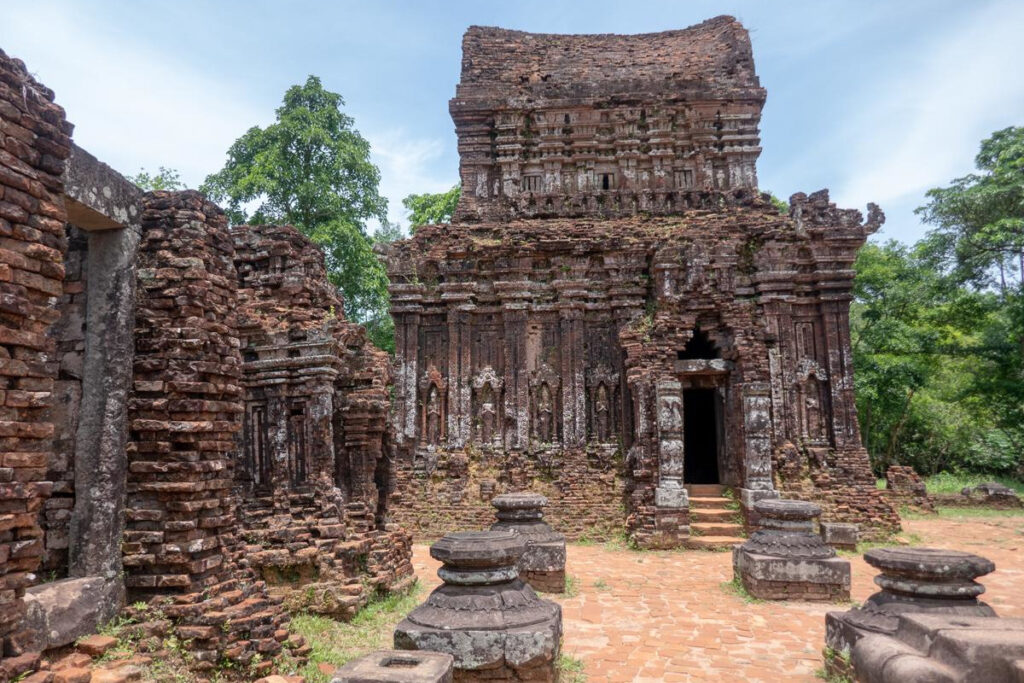
My Son Sanctuary Opening Hours
Daily, My Son Sanctuary opens from 6 a.m to 5 p.m, no matter which season in the year. Last tickets are sold in 4:50 p.m, but if expect a comfortable visit, should begin around 4. When the typhoon hits the area (around the last months), it may be closed to ensure visitor’s safety.
What Should I Wear?
My Son Sanctuary was holy to Cham people for over one thousand years, but abandoned in the 14th century. After Unesco recognition, local managers regulate a dress code for tourists to keep the sacredness and respect alive. In detail, visitors need to wear clothings that ensures to cover armpits, navels and knees. However, dress code check in the site is not really strict, and so, casual wear is okay. A pair of good shoes is necessary, because visitors need to walk around temples and get to each other. During the wet season, should have waterproof ones.
Before leaving the hotel, remember to bring cash, suncream, sunglasses, hat or cap and insect repellent because the sanctuary is amid the forests. Don’t forget a camera to bring home good pictures.
If would like to get on Cham’s traditional costume and make really nice instagram pictures, the rentals are availble.
The Best Time to Visit My Son Sanctuary
Dry season in My Son Sanctuary is from January to the end of September. In which, visitors can expect clear skies and many sunny hours, to sightsee and photograph. Rains rarely occur and temperature is always high, reaching peak from April to July. Therefore, the best times to explore its temples are in the morning and late afternoon when the midday heat has not really come or just passed. Lots of visitors choose to arrive in the early morning in high seasons, to avoid the crowds. Before the darkness falls, a visit in the sunset is more special.
70% of rainfall of the whole year is from October to December, the wet season. During it, typhoons often hit the land, causing pouring rains and flooding in My Son Sanctuary’s valley. Check the weather forecast in advance to avoid stormy days, to ensure the experience fully-enjoyable. The attraction may be closed. However, between typhoons or sunny days it is still nice to roam around and see, mainly thanks to the cool temperature. The clouds are usually around top of the hills, making the landscape charming.
How Much Time Do I Need to Visit My Son Sanctuary?
Visitors need to spend at least a half of day, to get to My Son Sanctuary, sightsee around and return. If just about the temples, a complete visit is often more and less than two hours. On the way from Da Nang or Hoi An, there are several stunning attractions to stop and explore. So, the trip may be longer than a half-day.

Champa Kingdom (4th to 13rd centuries)
For 900 years, My Son Sanctuary has been a holy land of the whole Champa kingdom. The Hindu-followed state flourished from the 2nd to 19th centuries along the Central coast of Vietnam. According to old memorial steles, this holy land was dedicated to worship of the Shiva “God of destroying and recreation”. Kings and monks held ceremonies here all year around until 14th century.
In 1306, Che Man king gave the land to Viet people to marry with a Vietnamese princess. Basically, he meant to build up relationships to keep the peace for his country, before impending invasions from Mongolian. Because of being too close to new frontiers, Cham emperors and people moved the capital further down South. So, My Son has been abandoned since then.
Location of My Son Sanctuary is carefully-selected by the emperors. It’s perfect for both religious meanings and military purposes. During the conflicts, if the kings felt dangerous, they would come to this to hide. Distance from the seat of power to here is just 30 kilometers. About religious relations, the sanctuary is within a valley that represents a Yoni and at the foot of Cat Tooth Mountain which symbolizes a Linga.
One small stream has its source from the mountain, flows through the sanctuary and finally flows into Thu Bon River. That river symbolizes the holy Ganges river in India. Thanks to rising up to 700 meters, the Cat Tooth mountain can be visible from the sea, and so the merchants see it as a landmark to come in the kingdom’s port. Its shape is like the head of Garuda bird, the pet of Vishnu god.
Rediscovery of My Son Temples
In 1885, a group of French soldiers discovered My Son’s temples in the jungle by mistake. Soon after, the sanctuary became a great attention to historians and archaeologists. However, because of remote location, bombs and wild environment, the excavations were not carried out yet. 7 years later, the Governor-General of French Indochina gave money to invest in excavations all over Central Vietnam.
In 1903 and 1904, Henri Parmentier, reigning director of the French School of the Far East and a prominent sculptor Charles Carpeaux, were two leaders of first large-scale explorations. During this time, these academic scientists left many paintings, stories, information and photos that are priceless today. Thanks to their works, some fallen temples were documented and easier to be reconstructed. After returning to the capital, he wrote two books: “Monuments in the Valley of My Son” and “Cham monuments in Central Vietnam”. In 1915, valued sculptures were moved to Da Nang to preserve better and much of them have been staying there until now.
My Son Sanctuary in Vietnam War
From 1968 to 1975, My Son’s mountains were hiding places of Vietcong (Vietnam communists), including leaders of the Quang Nam-Da Nang province. In history books, the area is called “Hon Tau revolution base”. For that reason, the American air forces dropped bombs here many times. Official documents indicate around 10 people who died while being in the cave. In 1972, the tallest tower A1 Temple was destructed by B52 bomb, and the action was harshly condemned by historians globally. When the war ends, daily people found 300 to 400 bombs in the sanctuary, and some are exhibited in a small gallery. Today, visitors still see bomb craters by E and F temples.
In the Post War
In 1981, Kazimierz Kwiatkowski, a Polish architect and conservationist arrived in Vietnam to save ruins in My Son Sanctuary. He stayed by the temples where he worked daily for 12 years, until 1994. Facing difficulties in different climate, bombings and dangers from the forests, this passionate man instructed to remove vegetations from the towers, support leaning structures and document art and architecture. In 1991, a sponsor from the Vietnam-Poland partnership project was cut, and he asked for fundings by himself to continue the work. A fund from Germany was made and then, two small galleries were established to store artifacts. Both are still in operation up to date. Because of amazing contributions, locals nicknamed him Kazik. In 1999, My Son was added to the Unesco world heritage site list, but he passed away suddenly. Local authorities placed a statue for him in Hoi An old town.
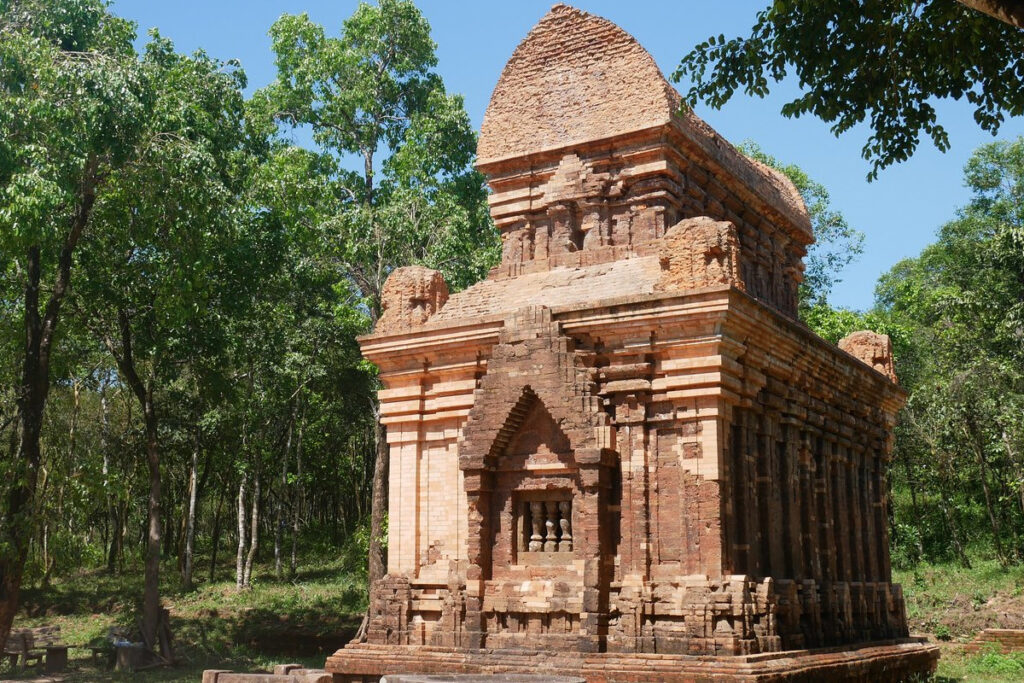
My Son’s Temples
Group B, C and D
In the heart of My Son Sanctuary, this group includes 27 buildings, making it become the largest cluster. Because of that, locals call it “the market temple”. The most important temple is the Stone temple (C1) which is believed to be the earliest-built in the sanctuary (about 4th century). Its material also makes it unique throughout the history of the kingdom, the only stone temple we know up to date. Dedicated to Shiva god, it features tall columns with a style similar to Greek temples. Historians are still finding answers for any links between two cultures. For them, stone blocks were transported by a network of dams in nearby streams. By the entrance to its praying space, visitors can see a sandstone stele with many intricately-carved Cham inscriptions.
To the west of Stone temple, there is another Shiva temple, but in the interior, a God statue stands on the Yoni, instead of a Linga as usual. For security reasons, the French brought the statue to Cham Museum in Da Nang, so today visitors only see a Yoni. In front of Stone temple, a stone bath where the water used for ceremonies is still seen. Formerly, the water must come from the stream nearby which represents Ganges River. A few meters away, the best wall decoration (on a temple) boasts of women sculptures wearing traditional sarong.
Group D has two long houses (called Mandapa) where pilgrims and monks meditate and prepare offspring before walking in the God temple. Polish archaeologists renovated them in the 1980s and converted them to house small exhibitions.
Group A – “The Pagoda Group”
From the Central group, walk across the stream and turn right, the visitors will see ruins of Group A. Within an enclosed wall, Cham emperors built nearly 20 small to large temples here, including the largest tower in the entire My Son sanctuary (A1). When the French rediscovered the area, they still saw it and painted its glorious architecture and decorations in detail then. According to them, its height is 24 meters. More special than other surrounding Hindu temples, two entrances are designed (instead of only one), opening to the East and West. Unfortunately, in 1972, bombs dropped by the American air forces destructed almost everything. Nowadays, reconstruction projects have been ongoing, in collaboration with Indian masters to return the glamour to it.
Group G
Temples of Group G stand on a hilltop, so visitors need to walk upstairs from the main trail. Constructed in the end of 12nd century, its Central temple was reconstructed incompletely by the Italian government’s sponsor, from 2003 to 2013. This is the first reconstruction in the whole of My Son by new techniques. President of the Unesco attended to congratulate the success. About the architecture, it doesn’t follow the traditional layout that has three entrances instead of one. Around it, visitors can see four other remains and featured Cham performances.
Group E and F – “Bomb Crater Temple”
Keeping walking along the main trail, the visitors will have the chance to see the most complete reconstructed temple in My Son. That is E7 temple and its function is still in secret. Featuring a new appearance resulting from Italian-developed techniques, it draws many visitors to talk photos with. Not far from, the Central temple becomes a ruin caused by abandonment, forests and bombings. Bomb creaters were visible in its surroundings. The pedestal (altar) where God statues are placed now has been preserved in Da Nang’s Cham Museum of Sculpture.
In 2012, a 7th-century Mukhalinga was found after a heavy rain here, among the rarest of the kind in the world. That’s simply a sandstone Linga with the head of the king. Recently, one of the largest pedestals was unearthed also. Both now are national treasures, but the first is kept in My Son Museum while the second stands in-situ.
To the north, the largest temple of F group now is vulnerable and facing the downfall anytime. It’s built around 8th century and in current situation because of forests during the abandonment and bombings. Archeologists established a metal roof and many supporters to keep it standing. A well-thought-out solution to save is not made yet, after nearly two decades.
Group H
Including 4 towers, remains of this group can be seen to the left of the main trail leading to My Son sanctuary. Excavations and reconstruction works were carried out by Indian and Vietnamese masters, from 2016 to 2019. All of its structures are arranged in a West-to-East axis, within an enclosure.
Group K
This group of temples is halfway from E and F temples to the buggy station, to the left. Built in 11st and 12nd centuries, it has recently been reconstructed with partnership between India and Vietnam. During the excavations, remains of “royal road” were found. Archaeologists said that might serve the emperor and his family members in festivals.
Cham Traditional Performances
Awesome Cham traditional art show is a must, to watch during the visit to My Son Sanctuary. It’s available at 9:15 a.m, 10:45 a.m, 2 p.m and 3:30 p.m daily. Within around a half of an hour, the artists may perform musical instruments and dancings in the festival, flexible Apsara dance or impressive performance of long lute. Visitors are advised to be in the public stage 10 minutes before the showtime, to find their own seatings. If aiming to see it right after arriving, time well your transportation.
My Son Museum and Exhibitions
After the ticket check, My Son Museum is the first attraction. Featuring a brick architecture designed and sponsored by Japanese, the history of My Son sanctuary and Champa kingdom is quickly told here. It owns two exhibitions, to either side of the main walkway. The left one a general scene of the holy land, contacts between its owners and the world and early features of temples. This space houses the copy of Mukhalinga, a national treasure and among the rarest of the kind worldwide. Protected by a glass box, the sandstone sculpture depicts a Linga with the king’s head. Historians guess that it’s topped with one gold cover originally. The gallery to the right reveals the meaning of different animal decorations and knowledge about My Son Unesco world heritage. If you would like to deepen your understanding of Cham techniques in building towers, sit back here and enjoy the video.
The Tower of My Son Sanctuary (Extra)
The French said that Cham people are masters in making brick buildings and sculptures in South-east Asia. Their opinion is proved by the tower of My Son Sanctuary. A brick used to construct a tower is just a half of the usual brick in weight. But its life is much longer, undoubtedly. Two bricks are connected to each other, by a hidden material that doesn’t allow water to come in empty space and vegetation growth. Unfortunately, descendants today have no ideas about. Somebody thinks that Cham builders used a combination between brick power, water and milk of a native plant. Archaeologists tried in some rescontructions because this is most feasible. To easier form the tower, bricks are unbaked and after the whole building looks perfect, the builders would burn it all. Amazingly, visitors must know the fact that the thickness of the base wall is smaller than the top.
A group of Cham temples includes at least three towers: the main (called Kalan), a longhouse (Mandapa) and the gate (Gorupa). The main entrance traditionally faces East where the sun rises and life begins, and is small to allow a few people to enter. Three other sides are decorated by sculptures and faked windows. Light comes inside the praying space from the hole from the roof.
My Son Temple Vietnam Shivling (Extra)
Linga and Yoni are a couple of objects that Cham people place in the temple and worship. As a whole, it symbolizes growth, power and development. Individually, the Linga is a representation of Shiva god, in the shape of a penis. Always being below the Linga, the Yoni represents the female form of Shiva god, in the shape of a vulva. This pair also expresses a harmonization between men and women that balance the world. Faucet of the Yoni usually faces North, because the direction brings fortune and indicates the location of Ganges river.
In My Son sanctuary, visitors can see many Linga and Yoni, in the interior and exterior of temples. Generally, it’s visible in most central temples. In the past, emperors and Hindu monks took the water from Khe The stream, to preserve it in a stone bath near the Stone temple. Then, the water was poured down from the top of Linga and flowed around the basin of Yoni, and through the gutter of the faucet to a pot. “Holy water” was used for many purposes later, including for drinking.
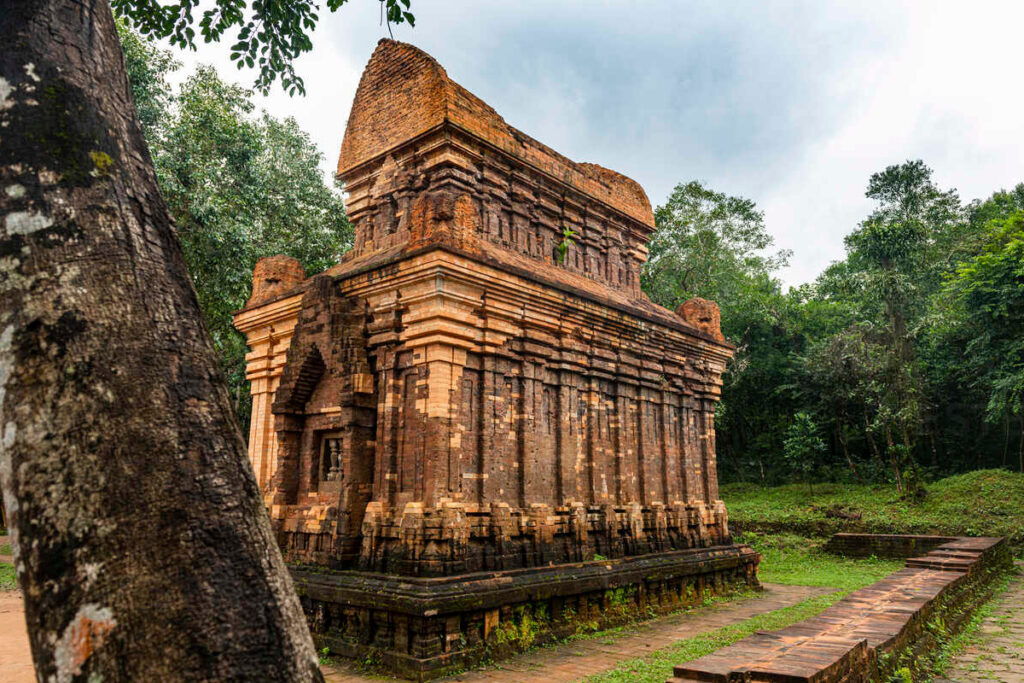
Where is My Son Sanctuary?
My Son Sanctuary is some 40 km west of Hoi An old town and 70 km to the southwest of Da Nang city center. About the administration, it’s located in Duy Phu commune, Duy Xuyen district, Quang Nam province. Thanks to being near provincial road DT610, visitors from Hoi An have convenience to get to it. Recently, the inauguration of a new bridge spanning Thu Bon River makes the way from Da Nang to My Son sanctuary shorter.
Da Nang to My Son Sanctuary
Distance from Da Nang to My Son sanctuary is still suitable for a day trip. It takes around 2 hours by car and bus, and longer if visitors travel by motorcycle or bicycle. Guided tours are also many to choose from, available all year around. If you are expecting something special, an exploration by jeep or boat can’t be missed out. To know pros and cons of each way to get, and details of different options, read our article How to Get from Da Nang to My Son Sanctuary.
Hoi An to My Son Sanctuary
By Taxi and Private Car
Taxi and private car rentals are proper to visitors who expect an easy and comfortable ride to My Son Sanctuary. If traveling with a family or friends, both are cheaper than organized tours but more freedom and flexibility. To have better deals, should contact the providers in advance. Especially during the high seasons, the action helps to find a car soon before it’s booked by another person. Prices are from 400,000 to 650,000 VND one way, for a four-seat car.
By Motorcycle and Bicycle
These vehicles are for visitors who prefer a freedom itinerary and explore stunning things on the way to Champa’s holy land. A motorbike rental in Hoi An is easy to find, with a price ranging from 100,000 to 250,000 VND for one day. The quickest way is hiring in the hotel. Helmet and roadside assistance are provided, but the riders usually have to pay for fuel by themselves. Generally, the drive from Hoi An is without difficulties, just following provincial road DT610 (south Thu Bon River) or DT609 (north Thu Bon River). It takes around one hour to arrive. See details of the routes below.
Besides self-guided trips, guided cycling tours from Hoi An are many to select. The experiences provide the itinerary with back roads and a guide (mechanic) who knows much about the sanctuary. See recommendations for a cycling tour from Hoi An to My Son Sanctuary in our article via centralvietnamguide.com/hoi-an-cycling-tour.
By Boat
Some Hoi An local tour operators provide a boat ride on Thu Bon river to somewhere near My Son Sanctuary (in the mountains). Cruising the upstream or downstream is your choice if booking a private tour, but in common, the ride to return to Hoi An is more popular. Main reason is to avoid the midday heat. If traveling with a car in the morning, it takes less time. While being on board, rural lands, villages and life of locals by water edges are the highlights. Lunch is served upon the request.
By Jeep
Traveling by a jeep is among the most special ways to discover My Son’s temples. In fact, most of the ride options are packaged tours which also include a guide, entrance fee and optional lunch. Like cycling itineraries, an experience on the military jeep prefers backstreets, small lanes, rural areas and unspoiled hills.
Roads from Hoi An to My Son Ruins
In the past, visitors had only a choice to get to My Son Sanctuary from Hoi An. It’s via the provincial road DT610 aka the South Thu Bon Road. Now, there is another route available, thanks to the construction of Giao Thuy bridge. About the “traditional” road, the riders need to leave the city first, by Hung Vuong St or through Cam Kim island up to personal preference. More slices of countryside are provided if choosing the second option. When arriving at Nam Phuoc town, continue the ride on DT610 until being under the second bridge. Turning left then following tree-lined road and signal boards to My Son.
The North Thu Bon Road (DT609) is also simple. Firstly, heading over to Vinh Dien town (by Hung Vuong St) and then, turning right to cross over Vinh Dien bridge. Turn left immediately, and keep going straight (by DT609) until you see the traffic light in the center of Dai Loc town. Turning left and riding straight once again. Just see the signal boards after arriving at My Son Sanctuary.
Parking Lots and Fee
In My Son Sanctuary, there are many bike parkings to leave your bicycle or motorcycle. The fee is 3,000 to 5,000 VND up to the seasons. Their location is just near the traffic circle or further behind the cars (in front of the counters). If you have no ideas, ride straight to the portal, the staff there will show where the parkings are.
My Son Sanctuary’s Restaurants
There are some restaurants in My Son Sanctuary, which have food and drink. The My Son Valley stands by the inner buggy transfer, serving some instant noodle dishes, banh mi sandwiches sometimes and cold beverages. A few walks from the portal, the My Son Restaurant’s menu includes fried rice, fried noodles, chicken rice, Mi quang noodle, and steamed rice with readymade foods. Coffee, tea, bottled and canned drinks, juices and snacks are also for sale. Near the traffic circle, Ganesha restaurant also caters rice and noodle dishes, stir-fried or fried with veggies and meats. If seeking a quick meal and not too high quality, pick any of these venues.
Mi Quang Tieng Quy
11 km away from My Son Sanctuary, this local eatery stands aside DT610 road and runs until the evening. It specializes in Mi quang, a noodle dish served with a bold soup, meats, raw vegetables and rice crackers. Only chicken (with bones) and snakehead fish are available now, with a reasonable price. Recently, the family opened a new eatery in Ho Chi Minh city, based on its reputation.
Dac San My Ga My Son
Not too far from Mi Quang Tieng Quy, this family-run eatery serves authentic Mi quang noodle. It’s widely known for delicious chicken noodle bowls, cooked from chicken organically-raised in gardens and without bones. Other options of meat are available on the menu too. Its façade features inspiration from Champa culture.
My Son Tour from Hoi An
A half-day My Son tour is popularly-selected to visitors who stay over in Hoi An. Main reason is that the distance between their hotel and the sanctuary is some 40 km. Rountrip transfer, pick up/drop off, entrance fee and guide are common inclusions. Lunch is optional, and if liking to extend the day or customize the itinerary, just discuss with the operator. Full-day experience from Hoi An to My Son Sanctuary may include the Marble Mountains or even Hoi An old town (if you haven’t seen it yet). Not only by car or bus, cycling, jeep and boat tours are also available. Find out recommendations for each type in our article centralvietnamguide.com/my-son-tour-from-hoi-an. To make it simpler, just contact us directly via whatsapp number (+84) 968009827 or send email to centralvietnamguide@gmail.com.
My Son Tour from Da Nang
Because of the 70-km-long distance, a full-day experience is recommended to visitors. Departure is in the morning to avoid the heat and crowds, and if would like to begin in early morning, just request. On the way back to Da Nang, visitors can choose to visit Hoi An old town or other attractions in its surroundings, or the Marble Mountains to complete the day. Don’t miss out on the night in Hoi An, the scene of lanterns is epic. To know recommendations about My Son tour from Da Nang, browse our article via centralvietnamguide.com/my-son-tour-from-da-nang. Easier, ask directly via whatsapp number (+84) 968009827 or email (centralvietnamguide@gmail.com).
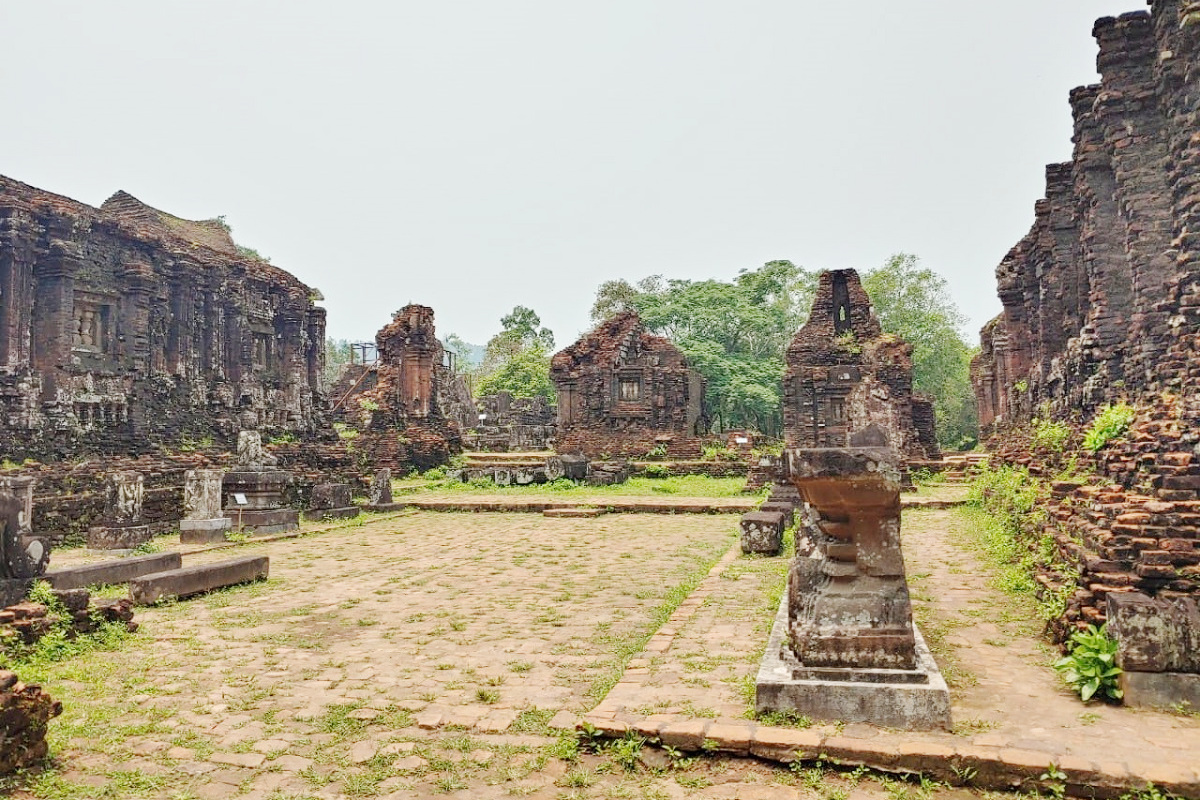
My Son Heritage Resort and Spa
3 km from My Son Sanctuary, this 4-star boutique hotel owns a polite architecture inspired from Cham and Viet cultures. Each room is air-conditioned, has a private bathroom and fully-equipped with amenities. In addition, families or groups of friends can see villa options, with high privacy, comfy beds, spacious bathrooms and gardens in the surroundings. Facilities include a swimming pool, restaurant, bar, spa, fitness center, and more. All are just at the guest’s doorstep. If needing a transfer to the sanctuary or return to Hoi An or Da Nang, it’s easy to arrange here. Motorcycle rentals can be booked, to discover unspoiled countryside and hills in the area.

My Son Sanctuary on Google Maps
Related Posts
Non Nuoc Beach: The Famous Beach of Da Nang
Besides the Golden hands bridge – a global hit, Da Nang city also has beautiful beaches. If looking for somewhere great to stay and have a slow holiday, Non Nuoc
How to Get from Da Nang to My Son Sanctuary
Known as ‘the Angkor Wat of Vietnam’, My Son sanctuary boasts of its sophisticated temples dating back from 4th century. Sadly, in 14th century, it’s abandoned in the forests. Today,
Thieu Tri Tomb: The Peaceful Royal Tomb of Hue
Thieu Tri emperor tomb is an unpopular place to visit in Hue. From the city centre, it’s closer than Khai Dinh tomb, Minh Mang tomb and Gia Long tomb, and
Bach Ma National Park: Hiking, Trekking in Da Nang and Hoi An
Two best places for trekking and hiking in and near Da Nang are Son Tra mountain (peninsula) and Bach Ma national park. Which one is better is actually personal because these
Hoi An Wet Season: What to Do in Hoi An When It Rains?
No beach, no pool, no outdoor adventures? What to do in Hoi An when it rains? This is a very popular question from travelers who come to Vietnam in the
Hue to Da Nang By Train: The Best Train Ride in Vietnam
Like Hanoi to Sapa, many travelers choose to get from Hue to Da Nang by train. Not just a cheap deal, the experience on this ride is definitely stunning and
Hue Royal Tombs: A Complete Guide and What is Best?
The Nguyen dynasty existed 143 years, from 1802 to 1945 with 13 emperors, but only 7 of them had their own mausoleum. On the map, all of these buildings are
The Hue Abandoned Water Park (Thuy Tien Lake Waterpark)
Recently, the Abandoned water park in Hue is known by travelers worldwide thanks to social media and online magazines, just like the Golden hands bridge in Da Nang. It was
Minh Mang Tomb Complete Visitor Guide
Minh Mang is the 2nd ruler of the Nguyen dynasty, the king of Vietnam from 1820 to 1840. His contributions to the country can’t be counted, including the largest territory Vietnamese
Tu Duc Tomb Complete Visitor Guide
Tomb of Tu Duc emperor is one of three most visited royal mausoleums in Hue. Two others are Minh Mang tomb – the tomb of Tu Duc king’s grandfather and
Thanh Ha Terracotta Park
Between 15th and 19th centuries, Hoi An was one of major stopovers for sailing merchants to trade in Southeast Asia. Meanwhile, craftspeople in its Thanh Ha village produce high-quality pottery
Vinwonders Nam Hoi An Theme Park (formerly Vinpearl Nam Hoi An)
In addition to historical and cultural attractions, nowadays Hoi An also has a couple of amusement parks to entertain. Definitely, they’re ideal places for families with children and groups of
Am Phu Cave Complete Travel Guide
Although in the Marble mountains – the most visited attraction in Da Nang, travelers often miss Am Phu cave. One of reasons is that it’s mentioned much online and not
Hoi An or Hue: Which is Better?
Both Hoi An and Hue cities are in the middle of Vietnam, and they’re not far from each other (about 130 km). Therefore, for those who travel from north to
Asia Park and Sun Wheel in Da Nang (Sun World Da Nang Wonders)
Have you ever seen the wheel of Da Nang? That is the Sun Wheel. It’s a part of greater Asia Park – an amusement park with a heap of fun
The Official Hoi An Travel Guide (MUST READ)
By the estuary of Thu Bon river, Hoi An is one of the best places to visit in Vietnam. This Vietnamese town is a package for travelers – a pretty
The Hoi An Market (Hoi An Central Market) Complete Guide
The Hoi An Market is the first market in Hoi An ever. Over centuries, it’s still the largest market in town although the town has a much bigger size than
Hoi An Memories Show: The Best of Hoi An Impression Theme Park
The Hoi An Memories Show is a famous series of outdoor performances in Hoi An at the present time. Thanks to its exceptional production and great cultural stories, it becomes
How to Get to Golden Bridge from Da Nang
The Golden Bridge (aka the Golden Hands Bridge) in Da Nang is a must visit attraction in Vietnam today. Many foreign travelers come to the city, just because they love
Hoi An Bridge: Famous Bridges in Hoi An
Hoi An has many bridges because it’s located at the confluence of 3 rivers: Thu Bon river, De Vong river and Truong Giang “Long river”. The distributaries of these rivers
Da Nang Food Specialties: What to Eat in Da Nang
Da Nang is known as a food capital of central Vietnam. This city boasts many yummy dishes, prepared by distinctive recipes and some of them are famous all over the
How to Get From Hoi An to My Son Sanctuary
My Son sanctuary is one of the most popular places to visit for tourists staying overnight in Hoi An, especially those who spend many days there. It’s known for a
Hoi An’s Chinese Assembly Halls and Chinese Temples
Chinese people migrated to Hoi An from the early 17th century. Today, Chinese communities as a whole are the second most important piece to form the town’s unique culture. The foremost
Hoi An Walking Tours: Heritage, Foods, Photography & Locals
Strolling around heritage quarters with a local guide is the activity that so many travelers love to do in Hoi An. It enriches their time in this lovely town. Firstly,
Hoi An Self Guided Walking Tour (Hoi An By Yourself)
Hoi An old town is friendly for pedestrians, especially during the time that motorized vehicles (scooters, cars, etc) are prohibited to move around its heritage quarters. That is safe for
How to Visit Golden Bridge Vietnam
The Golden Hand Bridge of Ba Na hills today is a dream place to visit for many travelers. Since it opened in June 2018, millions of people have set their
Da Nang Shore Excursions: Guided Tours From Tien Sa Port
Da Nang Vietnam today is one of stopovers for many cruises that travel from continent to continent, from country to country. It owns an ideal seaport to moor and it
Unique Experiences in Hoi An and Why?
Today, travelers seek more experiences in the destination they go to. They want to have a deeper understanding about the culture of local people and interact with them. No other
Han Market (Cho Han): Where to Shop in Da Nang?
In the heart of Da Nang, the Han market is a popular place for visitors to buy something to bring home due to the diversity of merchandise. Back to history,
An Bang Beach: A Guide to Hoi An’s Best Beach
An Bang beach now becomes a popular tourist attraction in Hoi An. It may be the best known and most convenient to reach from the town’s centre. Not only tourists,
Experiences in Hoi An: Get Insight Into Hoi An’s Local Culture
As the most unique Vietnamese town, Hoi An is definitely worth visiting. Here, visitors have many things to do and experiences for their holiday time. Everyone knows that it has
Da Nang Cathedral (Da Nang Pink Church)
Da Nang became a French protectorate on 3rd October 1888, under the name “Tourane”. By the Han river, the colonists designed a grid of streets with public buildings, a city hall,
Things to Do in Ba Na Hills Besides Golden Bridge
According to local authorities, 50% of visitors coming to Da Nang and Hoi An visit the Ba Na hills. In other words, that is nearly 10 millions of people. This
Hoi An Nightlife: What to Do in Hoi An At Night?
After dark, Hoi An becomes exceptionally spectacular. If planning to stay overnight or visiting this ancient heritage town, at least travelers know that it’s “decorated” by so many colorful lanterns.
Hoi An Countryside: Villages, Rice Fields & Tours
By the coast, Hoi An is at the confluence of 3 rivers: Thu Bon river, Truong Giang river and De Vong river. This economically strategic location has supported trading activities
How to Get to Golden Bridge From Hoi An
There are many travelers visiting the Golden bridge from Hoi An. Both the bridge and the town today are must-see places in the region, so staying overnight in the town
Hoi An Entrance Fee: Old Town, Golden Bridge, My Son, More
Are you planning to visit Hoi An? And you don’t know how much cash you need to prepare for visiting places? This article lists tourist attractions in Hoi An and
Hoi An Airport: Everything You Need to Know
Hoi An is a famous tourist city in Vietnam. It’s 800 kilometers away from Hanoi, the capital of Vietnam and nearly 1,000 kilometers from Ho Chi Minh city, the biggest
Hoi An Lantern Boat Ride on Hoai River
A lantern boat ride is a thing to do that visitors must do today in Hoi An. For many centuries, locals have taken it on the Hoai river by the
Da Nang Half Day Tours
In addition to day trips, travelers have many options of half-day tours in Da Nang to choose from. Not to spend a full day at different places, maybe far from
Hoi An Private Car and Driver
Hoi An is one of the most popular tourist destinations in Vietnam. In the busiest year, it attracts about 9 millions visitors who come to enjoy its charming beauty, rich
Da Nang Private Car and Driver
Your next holiday destination is Da Nang? You prefer to travel by yourself? Hiring a private car is one of the best options for you to explore with freedom, flexibility
What to Do in Hoi An Ancient Town
Hoi An Ancient Town is a must see, not only thanks to its world heritage title, but also to its vintage urban landscape, lots of attractions and activities. In the
Da Nang and Hoi An Itinerary for Visitors Staying Overnight in Hoi An
Da Nang and Hoi An are twin cities in the heart of Central Vietnam. Both are popular tourist destinations for either domestic or international visitors, and share many similarities. Due
Hoi An 3 Day Itinerary: A Travel Plan for 3 Days in Hoi An
3 days are a perfect duration to stay overnight in Hoi An and explore captivating places in and around it. Especially for those who travel from city to city or
Hoi An Free Things to Do: Budget Travel in Hoi An Vietnam
Travelers should know free things to do in Hoi An, to save the budget for this wonderful city and by that, can stay longer to explore. From old town, countryside
Hoi An One Day Itinerary: A Travel Plan for One Day in Hoi An
From a backwater town in the 1990s, Hoi An today is one of leading tourist destinations across Vietnam. In a recent year, it attracted 8,5 millions of overnight visitors and
Da Nang Things to Do: Guide to What to Do in Da Nang Vietnam
Unquestionably, Da Nang deserves a holiday trip from all types of traveller. Firstly, due to the weather. It has a longer sunny time than the north but less hot than
Da Nang Best Things to Do and Reasons
Da Nang is the largest tourist center in Central Vietnam. It owns fascinating natural and cultural places that attract both Vietnamese and foreigners. In the busiest year, this city of
Hoi An Half-Day Tours: Guide to Half Day Trips From Hoi An
Top attractions near Hoi An require a couple of hours or half a day, to get there and visit around. The reason is that all have many things to see,

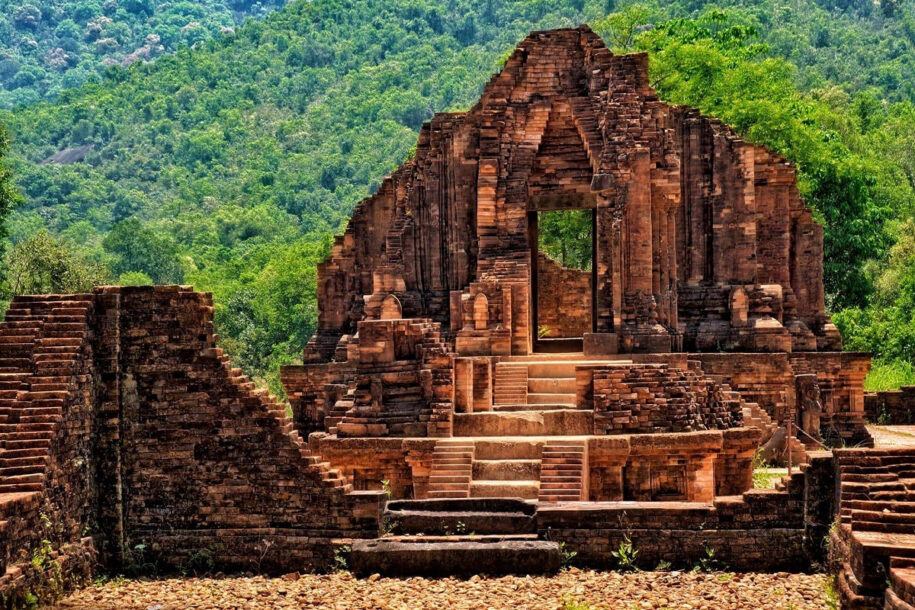



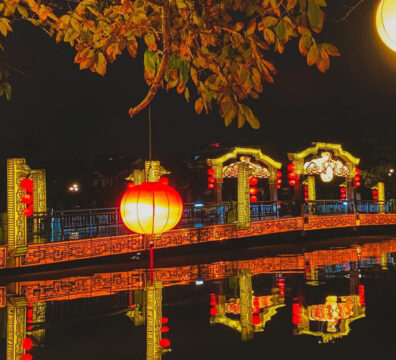

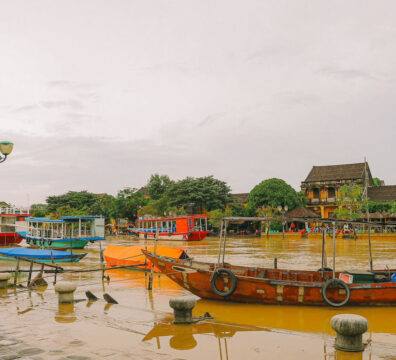

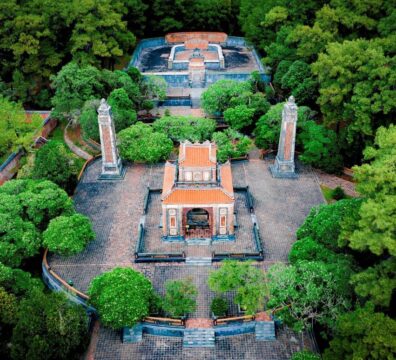



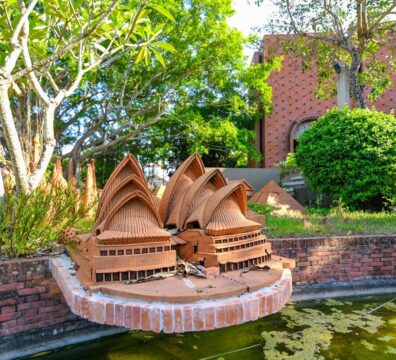




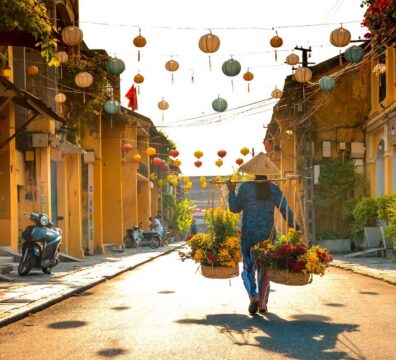


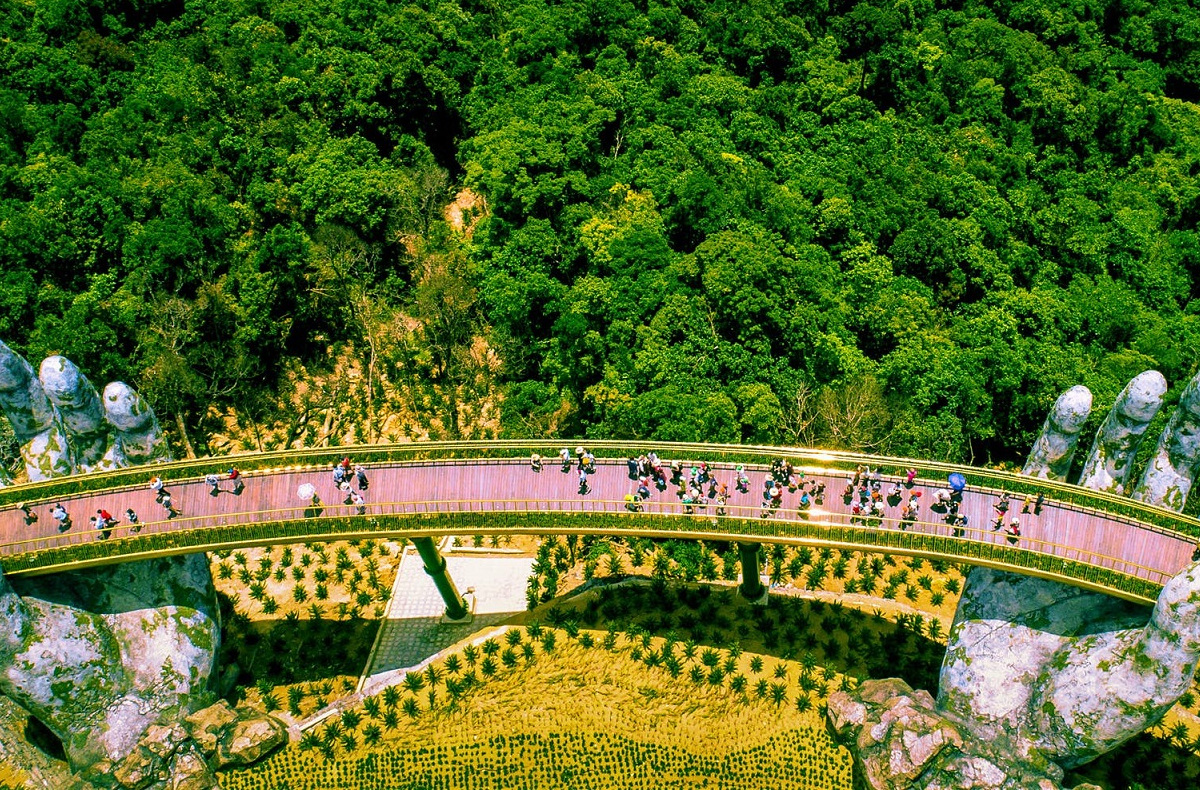

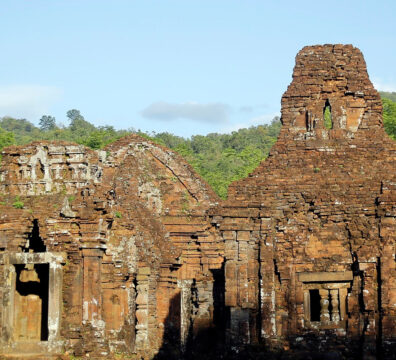


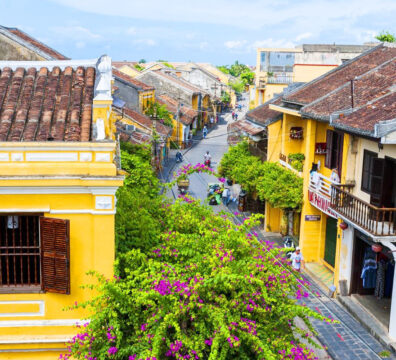










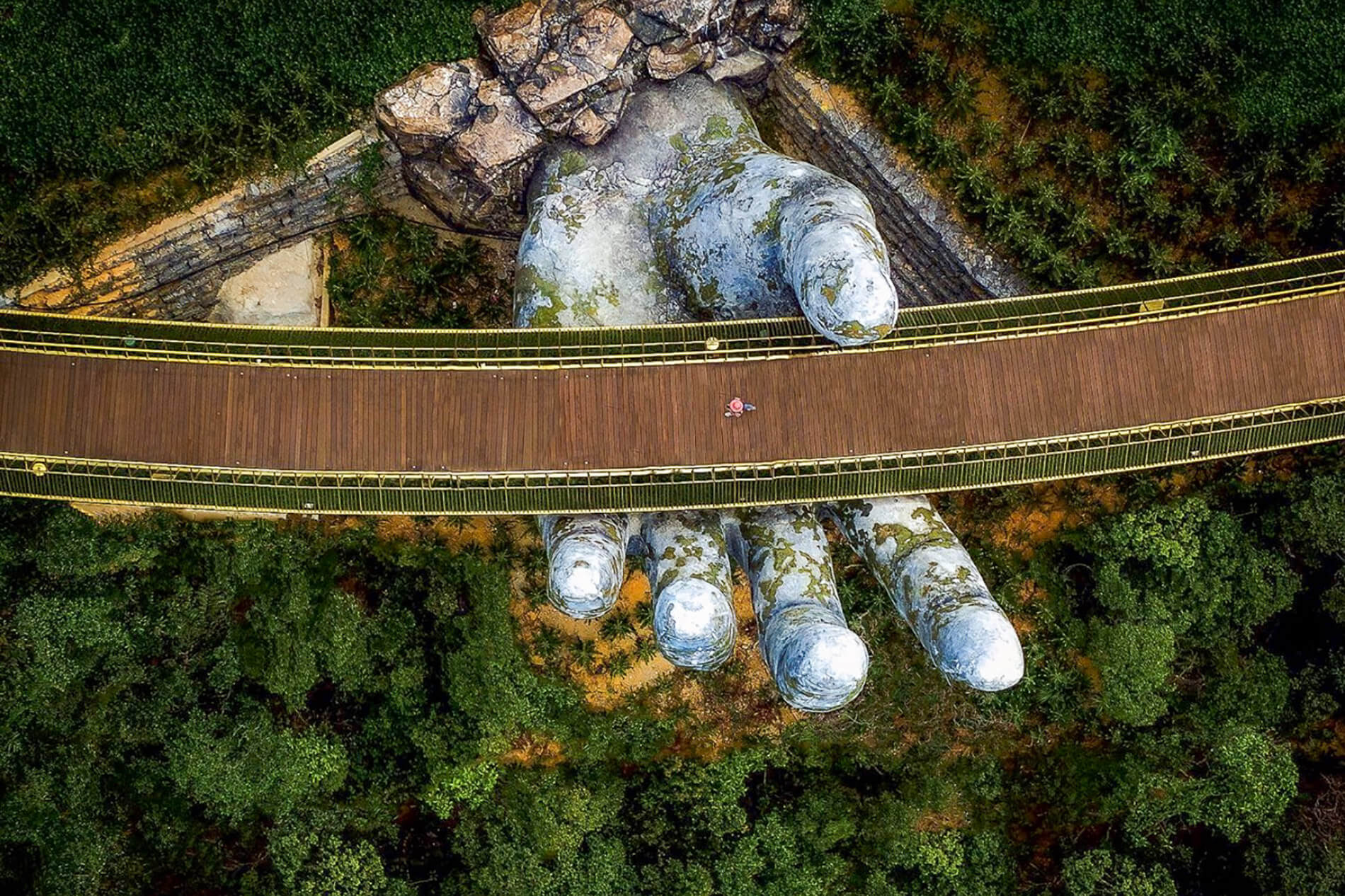



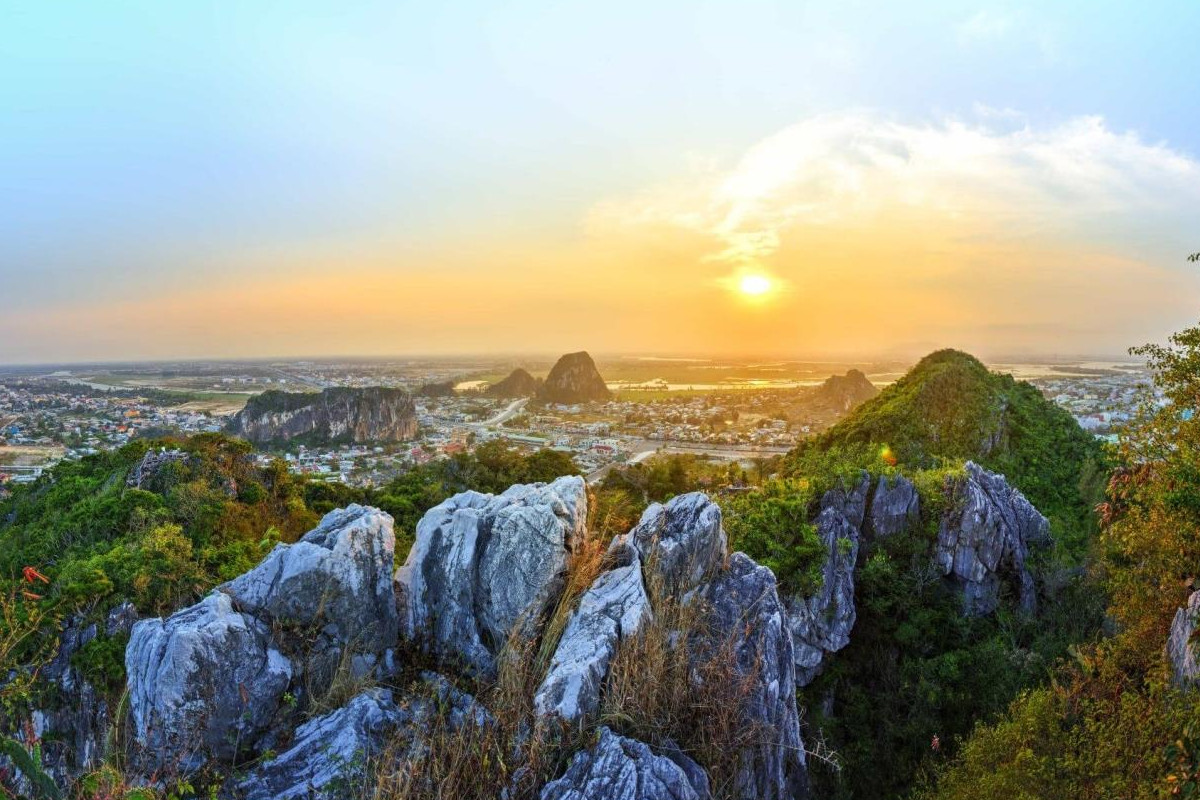





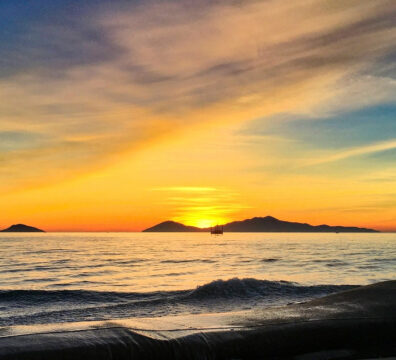






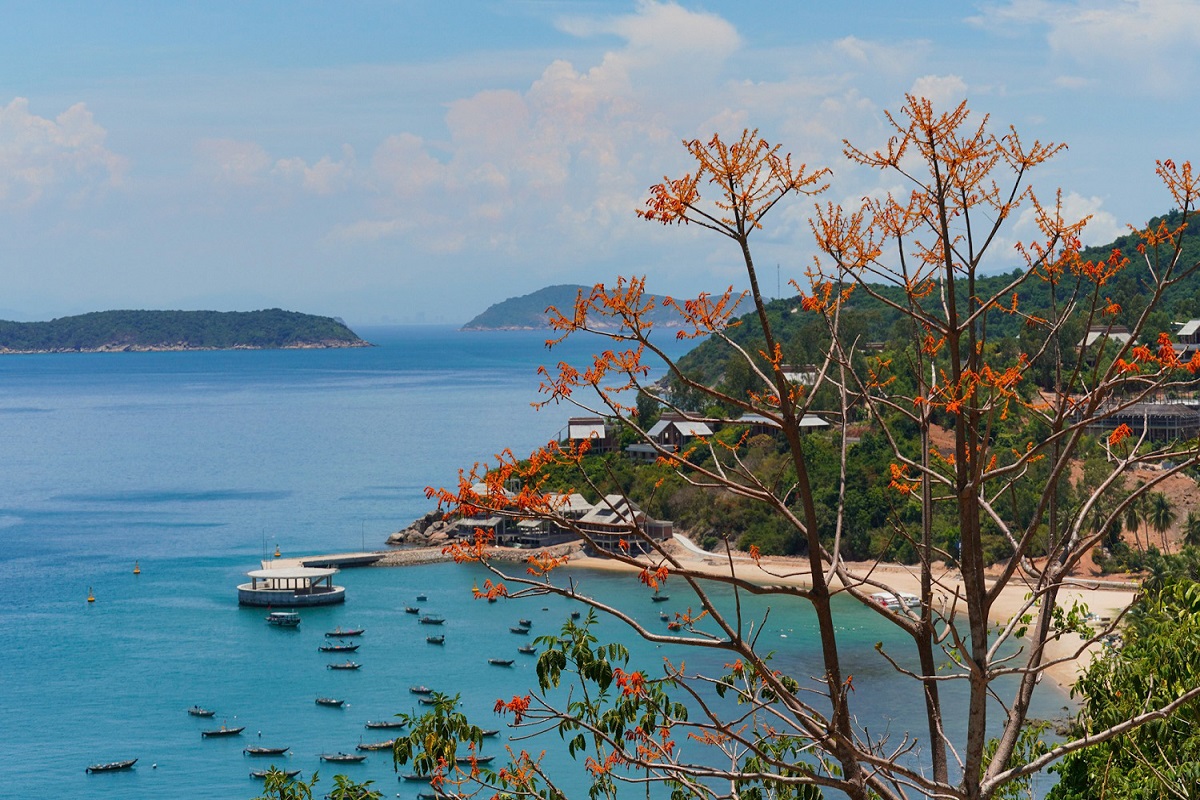







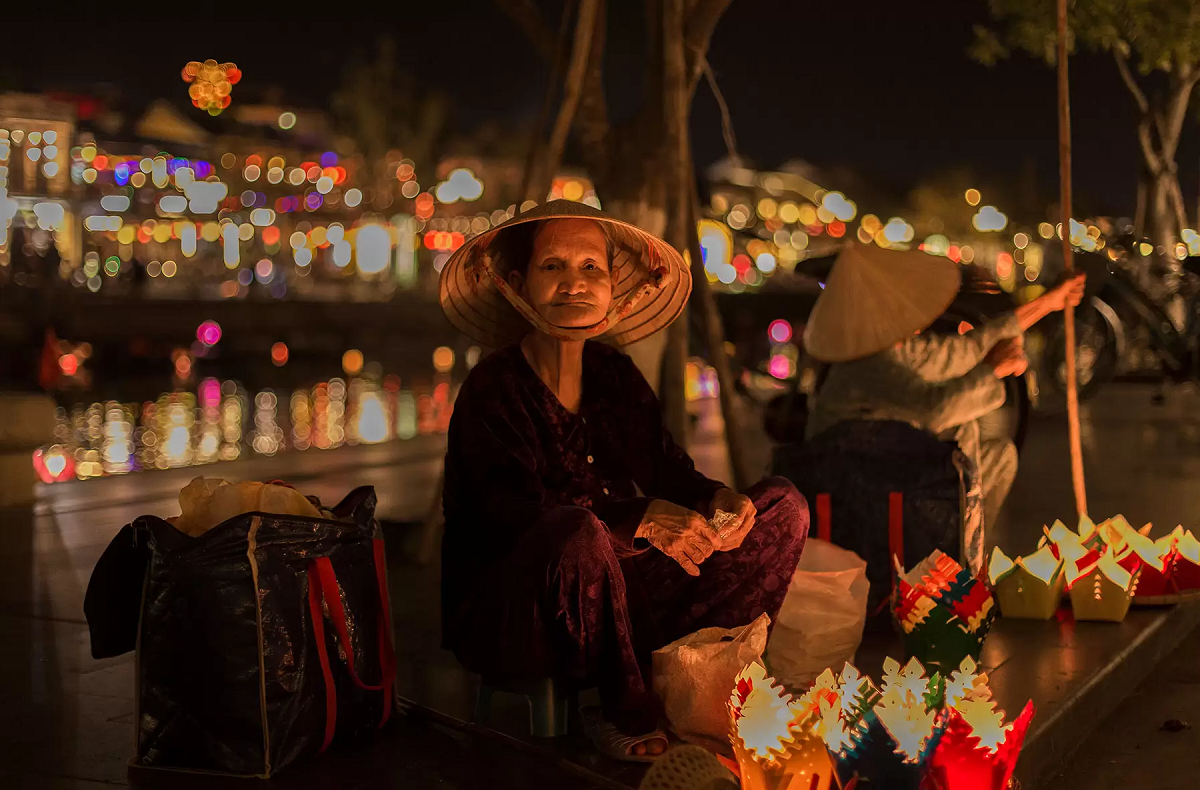

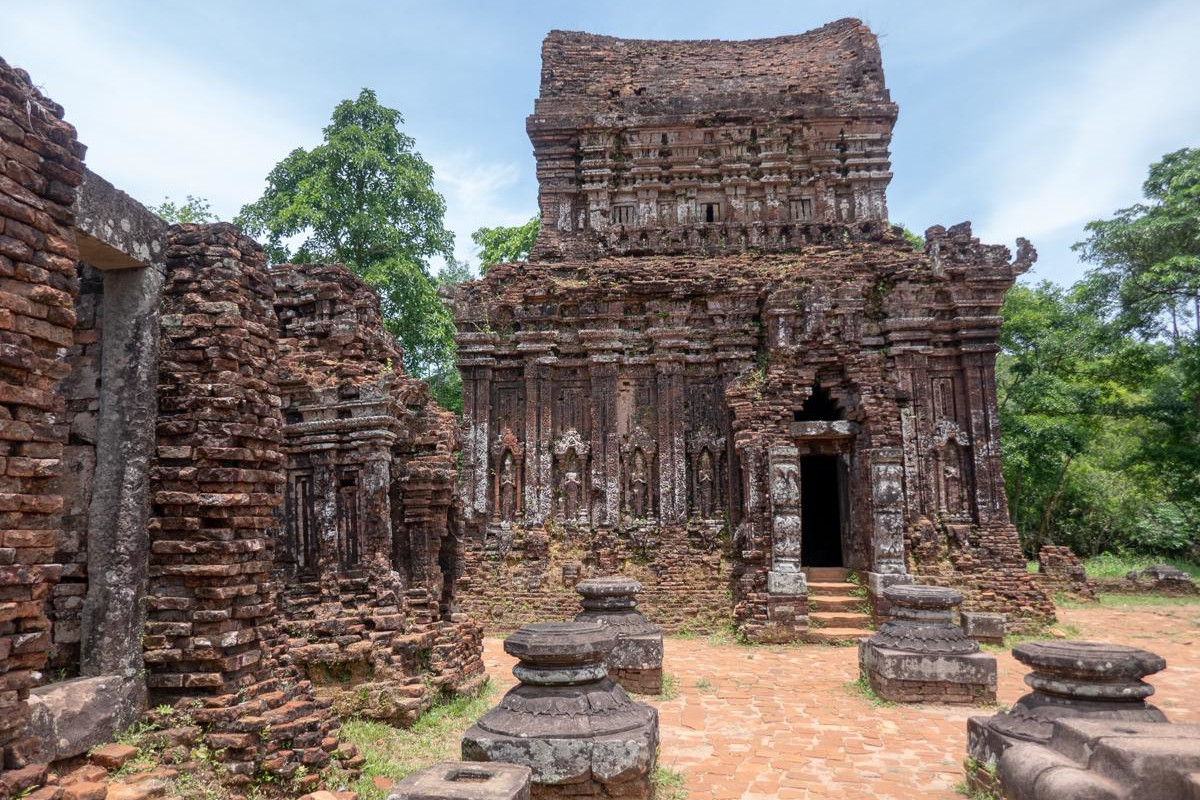

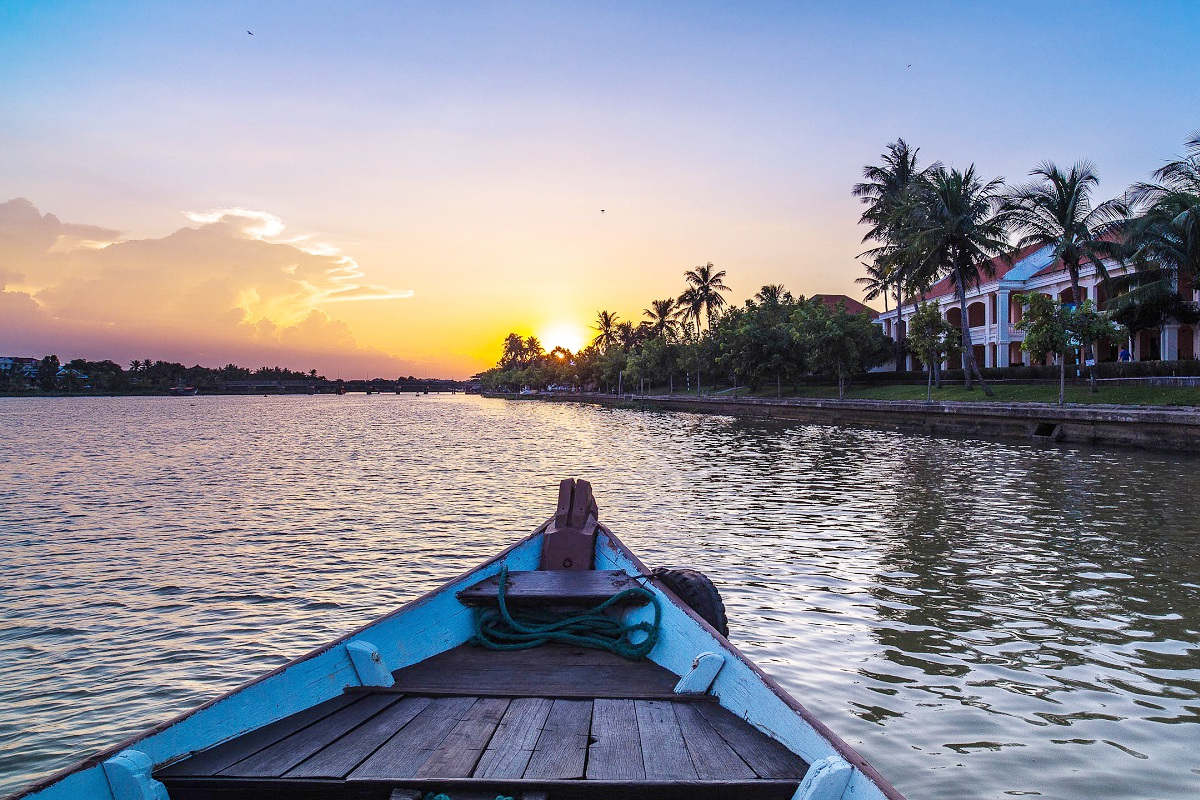





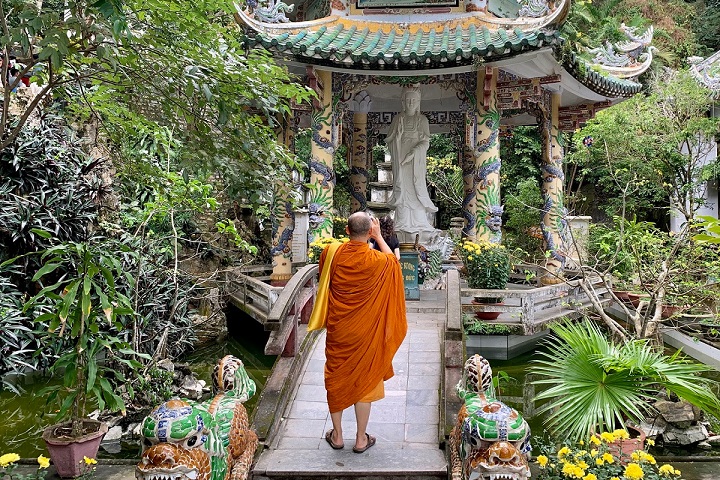

















Leave a Reply